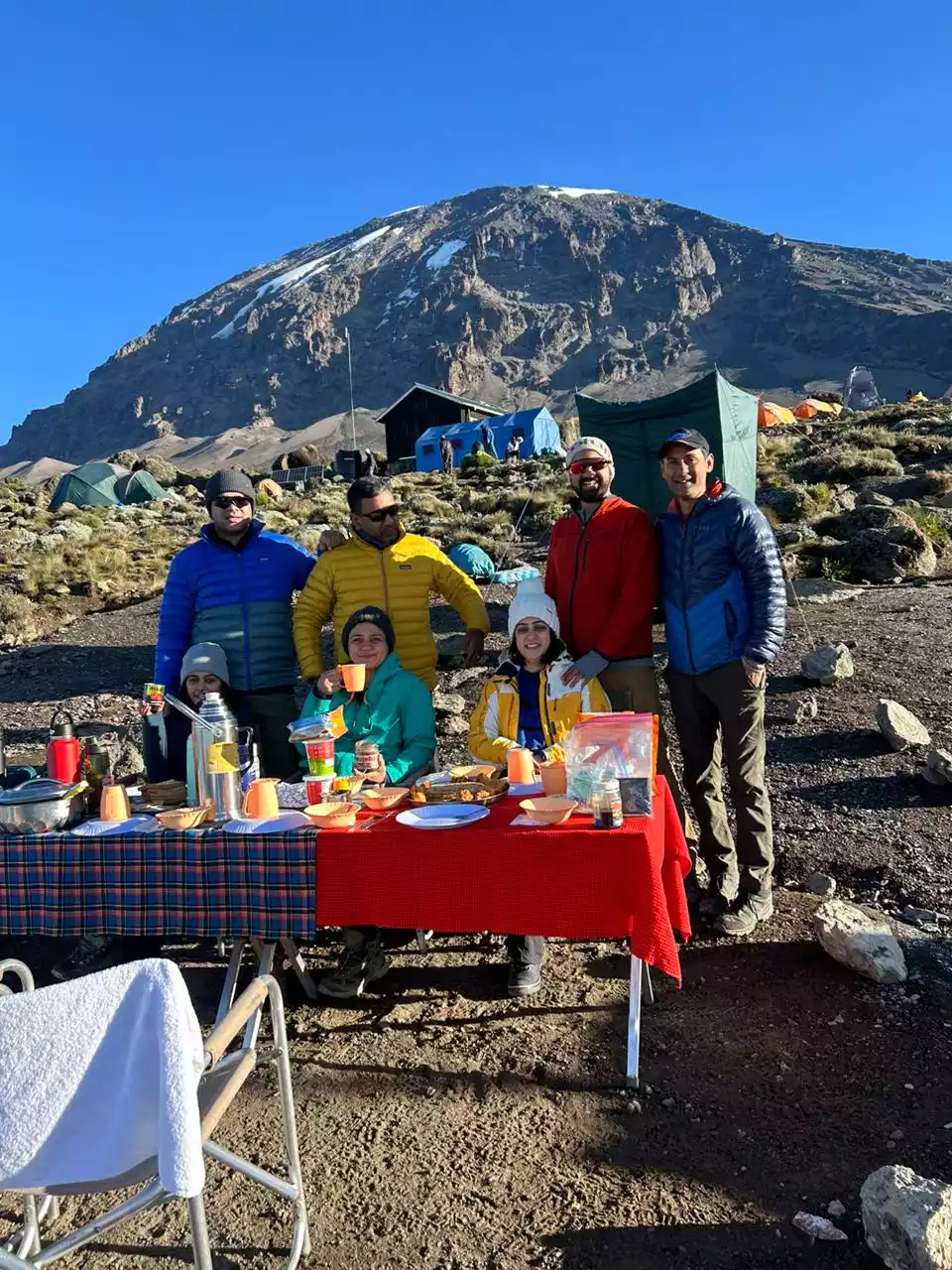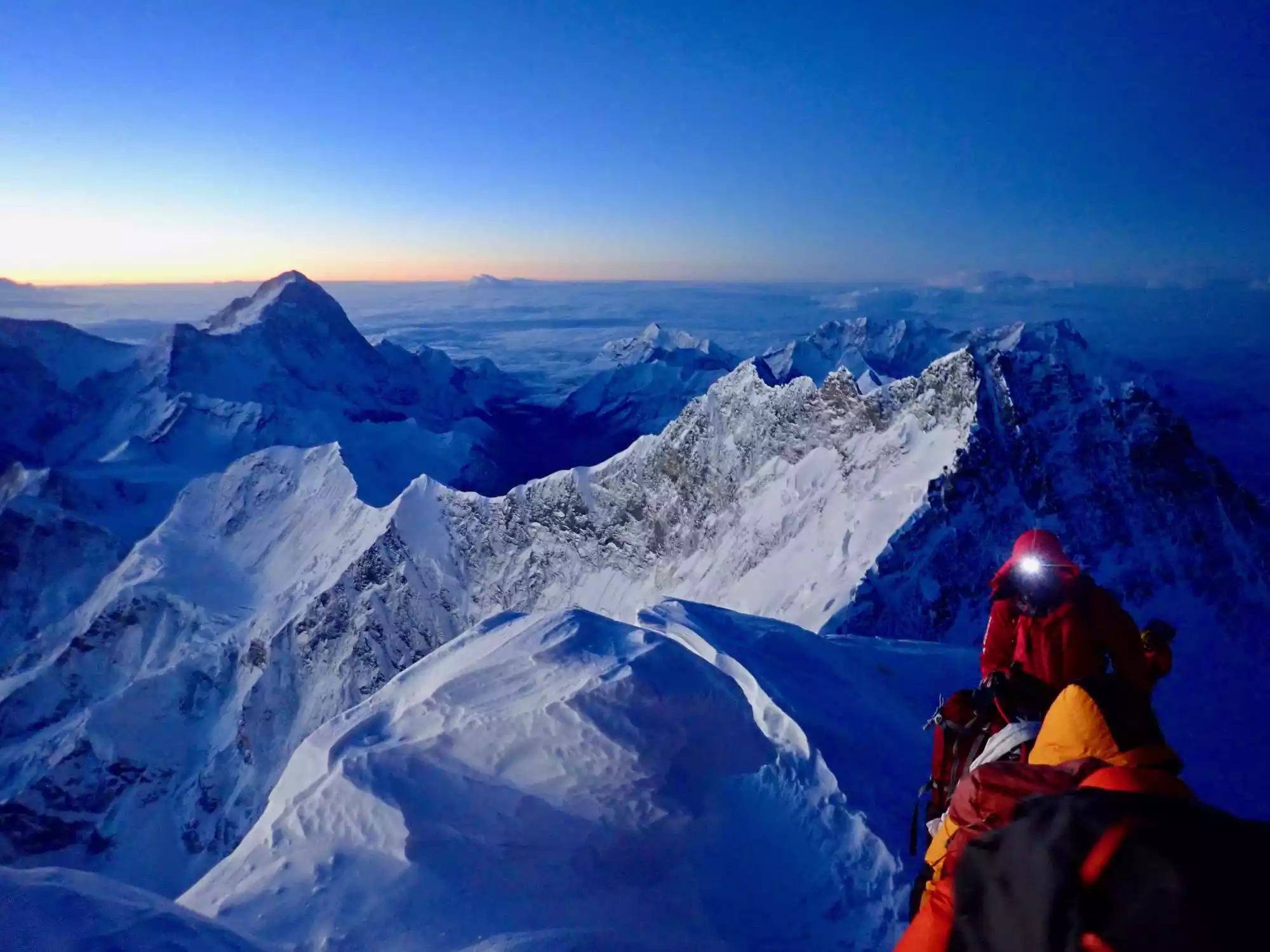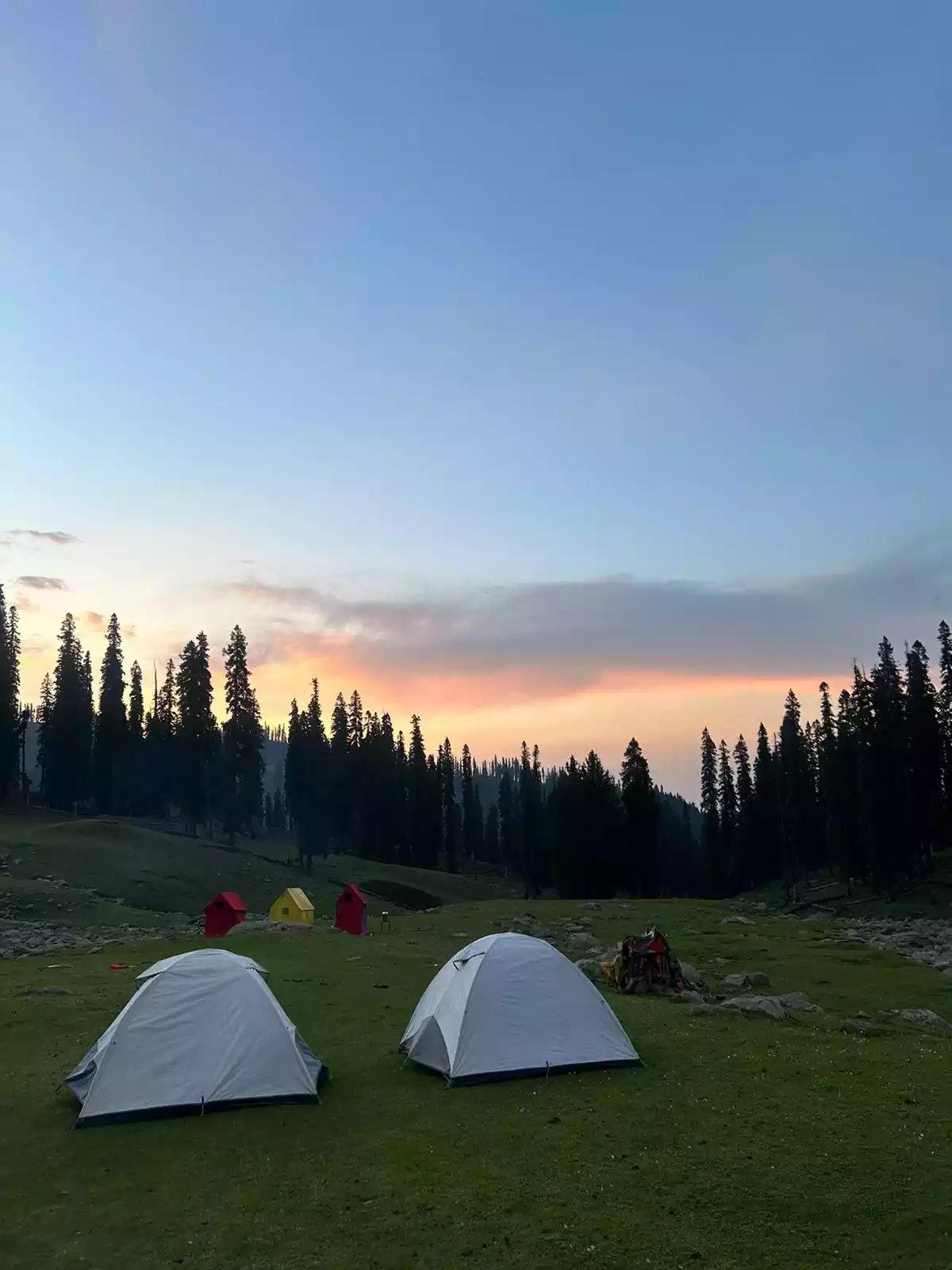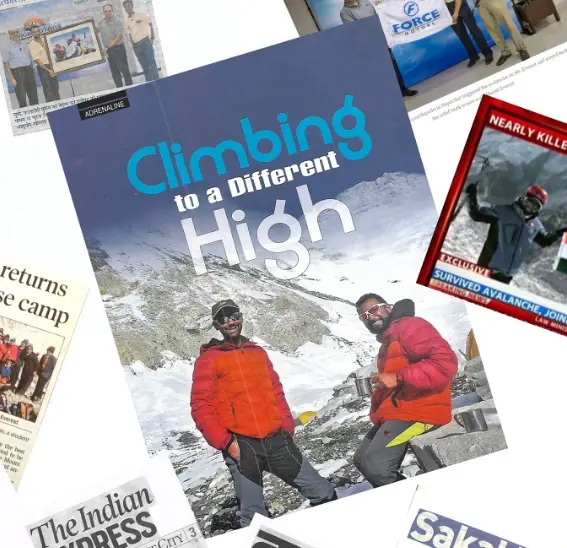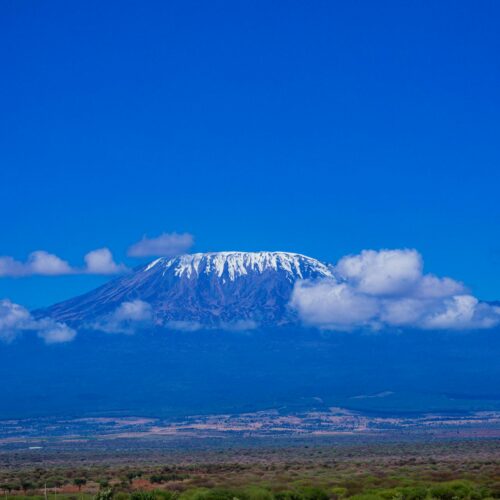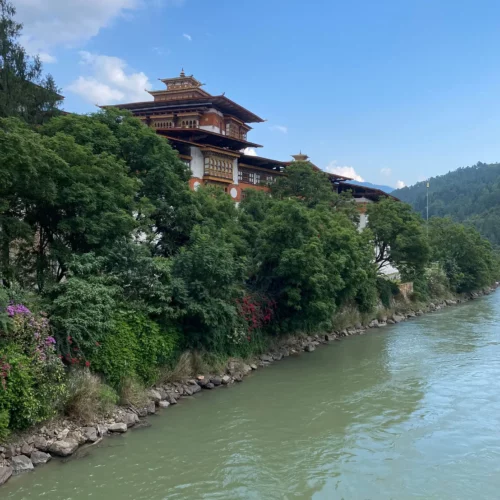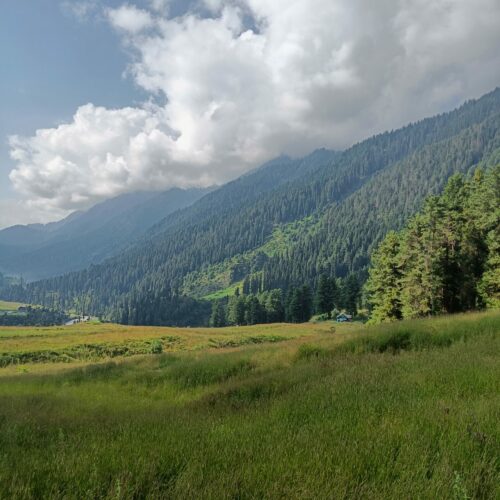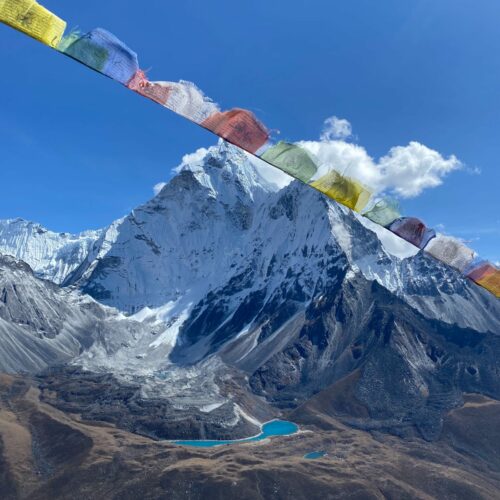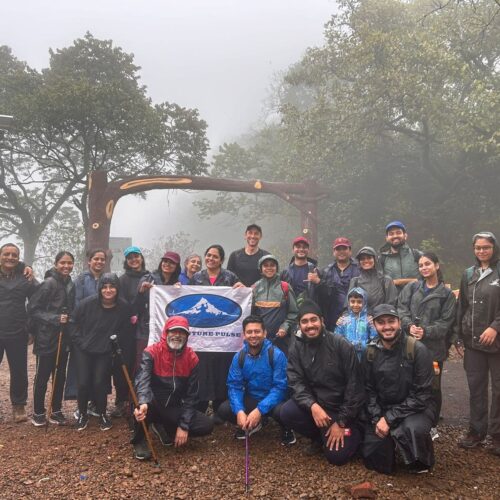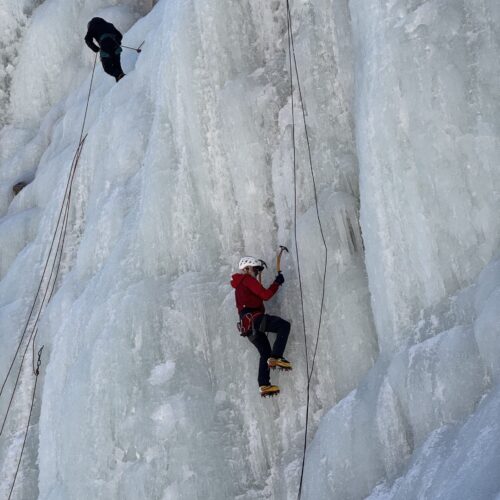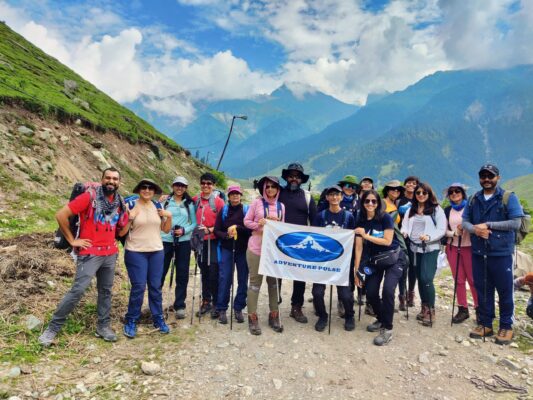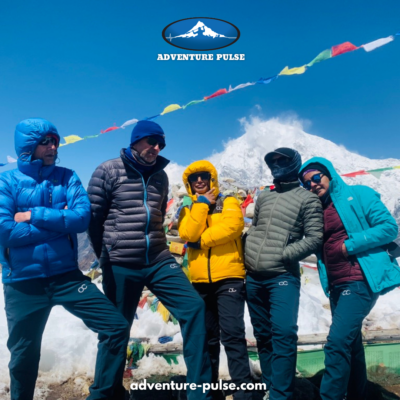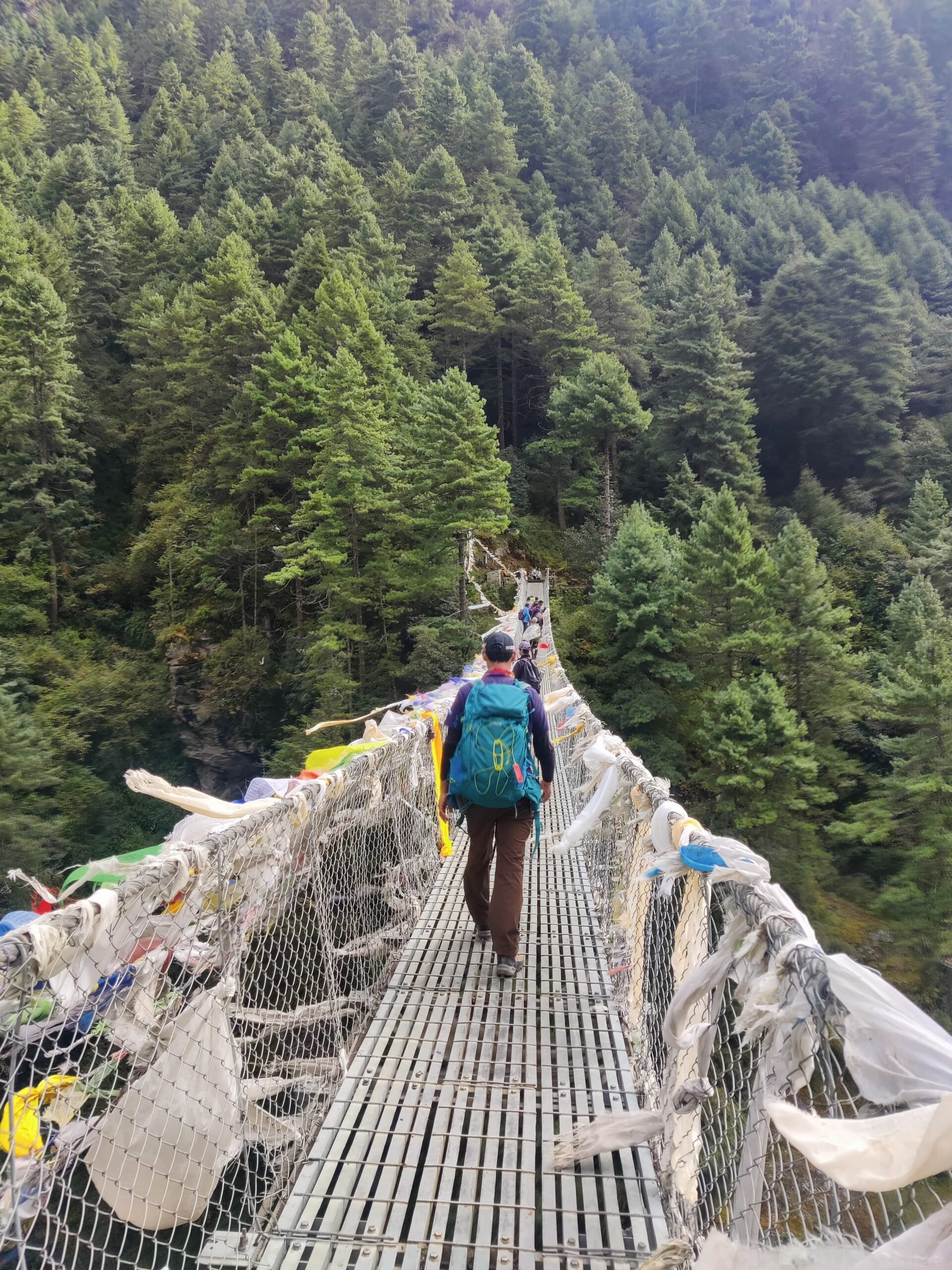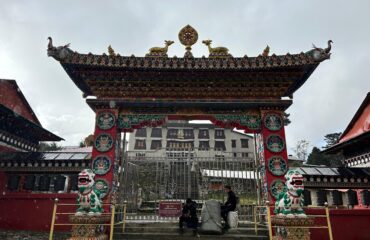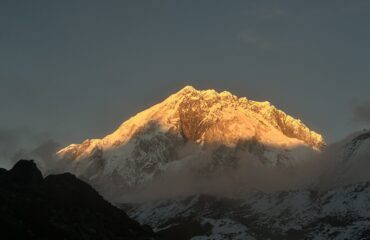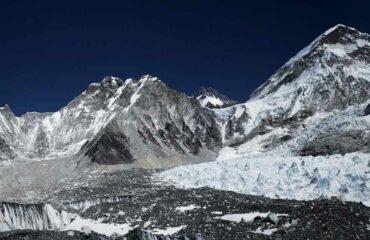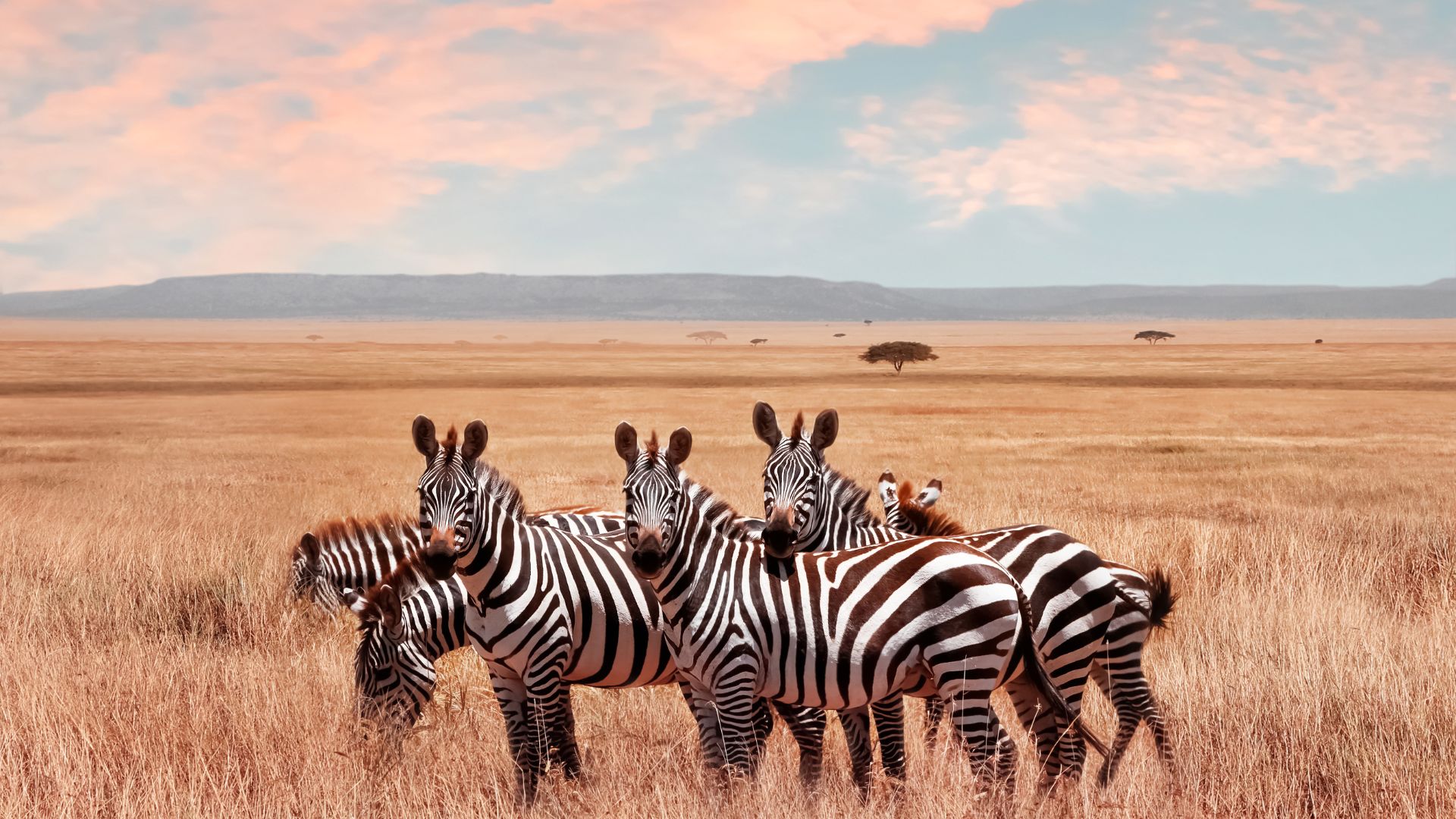
Kilimanjaro National Park, Tanzania
Kilimanjaro National Park, situated in northern Tanzania, is renowned for housing Mount Kilimanjaro, Africa’s tallest peak at 5,895 meters (19,341 feet). UNESCO designated it as a World Heritage Site. The park attracts thousands of adventurers each year who aim to reach Uhuru Peak, the mountain’s summit. Unlike Tanzania’s other national parks, which are celebrated for wildlife safaris, a safari in Africa in Kilimanjaro National Park offers a unique adventure with its diverse ecosystems. These ecosystems range from lush rainforests and alpine meadows to arid volcanic landscapes and glacial ice caps, offering a distinct experience for nature lovers.
The park’s lower slopes teem with biodiversity, hosting unique flora and fauna such as colobus monkeys, elephants, and buffalo. As climbers ascend, the terrain transforms dramatically, presenting stunning vistas and challenging trails like the Machame, Marangu, and Lemosho routes, which can be enjoyed alongside a safari in Africa to witness the incredible wildlife surrounding the area.
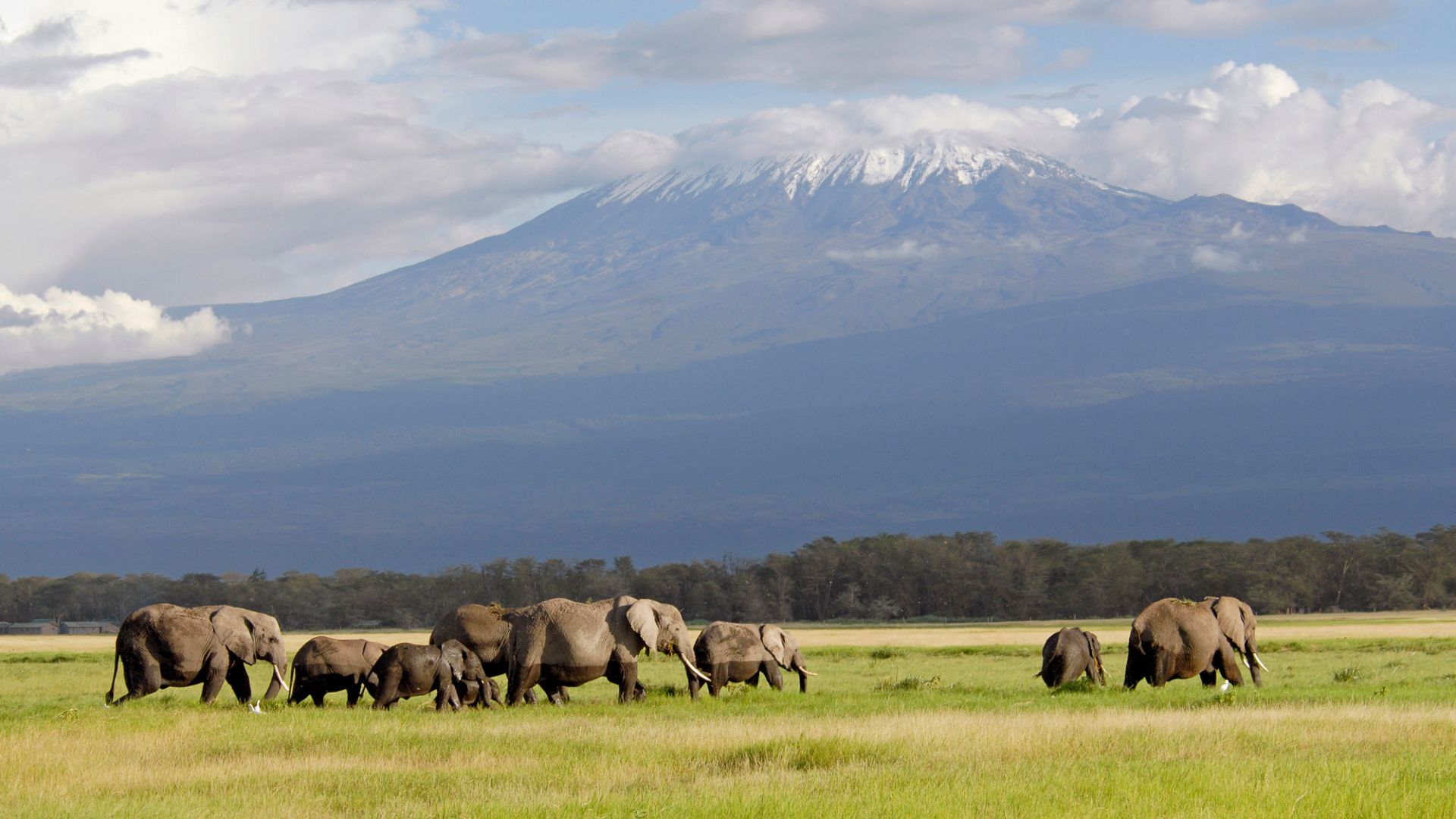
Beyond its natural allure, Kilimanjaro National Park holds cultural significance for the Chagga people, who have lived at the mountain’s foothills for centuries. Their traditions and history add cultural depth to the park, enriching the experience for visitors who combine their trek with a safari in Africa. Whether for adventure, natural beauty, or cultural exploration, Kilimanjaro National Park stands as one of Africa’s most extraordinary destinations.
How to Reach
Travelers can easily access Kilimanjaro National Park through various transportation options, making it a convenient destination for a safari in Africa. The most convenient way to reach the park is by air. Kilimanjaro International Airport (JRO), located about 45 kilometers from the park’s entrance, serves as the primary gateway. The airport connects to international flights from cities like Nairobi, Kenya, Dar es Salaam, Tanzania, and Zanzibar.
From the airport, travelers can take a short drive to the park’s entrance or nearby towns such as Moshi or Arusha, which serve as popular bases for trekkers. Those already in Tanzania can reach the park by road as another viable option. The drive from Moshi, the closest town to the park, takes approximately 30 minutes, while the journey from Arusha, a larger city, takes about 2 hours. Taxis and private transfers are readily available in both towns, offering a hassle-free way to reach the park entrance. After experiencing a safari in Africa, visitors can explore the surrounding towns or embark on more adventurous treks.
Alternatively, travelers can opt for the train, though this is less common. The Tanzanian Railways operates services from Dar es Salaam to Moshi, the nearest town to the park. From Moshi, visitors can continue their journey to the park by taxi or bus. The park’s accessibility makes it an ideal starting point for exploring Tanzania, whether for trekking Mount Kilimanjaro or venturing into the surrounding areas. After a safari, many visitors find themselves exploring further into Tanzania’s wildlife-rich regions.
Duration of Safaris
The duration of safaris in the Kilimanjaro region varies depending on the type of experience travelers seek, whether it’s a standalone wildlife safari or one combined with a trek up Mount Kilimanjaro. If you’re interested in combining a safari in Africa with a climb, you’ll be able to enjoy both wildlife and the stunning landscapes of Mount Kilimanjaro.
Short safaris, lasting 1–3 days, are ideal for travelers with limited time who still want to experience Tanzania’s wildlife. These safaris often include visits to nearby parks such as Tarangire National Park, Lake Manyara, or the Ngorongoro Crater. They provide a condensed yet rewarding wildlife-viewing experience, perfect for those who cannot commit to a longer journey.
Standard safaris, typically lasting 4–7 days, are the most popular choice for visitors. These safaris usually cover multiple national parks in Tanzania’s northern circuit, including Serengeti National Park, Ngorongoro Crater, and Lake Manyara. Travelers can witness a wide range of wildlife, from the Big Five to rare species, while exploring the region’s diverse landscapes. This duration strikes a balance between comprehensive wildlife viewing and manageable travel time.
For those seeking a more immersive experience, extended safaris lasting 8 days or more are ideal. These safaris can be customized to include multiple parks and reserves, such as the Selous Game Reserve or Ruinsori Mountains National Park, alongside the Kilimanjaro region. Combining an extended safari in Africa with a trek up Kilimanjaro offers an unforgettable adventure.
Mount Kilimanjaro’s Unique Flora & Fauna
As trekkers ascend Mount Kilimanjaro, they pass through diverse ecosystems, from lush rainforests to alpine deserts. The lower slopes host a variety of wildlife, including colobus monkeys, elephants, buffaloes, and numerous bird species. Higher up, climbers may also encounter antelope, warthogs, and hyraxes. After a challenging trek, many visitors continue their adventure with a safari in Africa in the surrounding national parks, encountering even more wildlife.
Safari in the Ngorongoro Crater
Just a short drive from Kilimanjaro, the Ngorongoro Crater ranks as one of Tanzania’s top wildlife destinations. Known as the “Garden of Eden,” this UNESCO World Heritage Site offers a safari in Africa experience like no other, with a high concentration of wildlife, including the Big Five—lions, elephants, rhinos, buffaloes, and leopards—along with zebras, hippos, cheetahs, and flamingos.

Serengeti National Park
The Serengeti is renowned for its Great Migration, where millions of Wildebeest and Zebras traverse the plains in one of the world’s most spectacular wildlife events. Visitors can witness vast herds on the move, closely followed by predators like Lions, Cheetahs, and Hyenas. The park also hosts Elephants, Giraffes, Gazelles, and over 500 bird species, making it a paradise for wildlife enthusiasts. A safari in Africa here offers an unforgettable experience.
Tarangire National Park
Located in northern Tanzania, Tarangire National Park is famous for its large Elephant herds and breathtaking landscapes dotted with ancient baobab trees. The park also serves as a haven for bird watchers, boasting over 550 bird species, including the rare African Grey Parrot and the majestic Kori Bustard. Its diverse ecosystem supports a variety of wildlife, making it a must-visit safari destination for those seeking a safari in Africa.
Lake Manyara National Park
Renowned for its tree-climbing lions, Lake Manyara National Park offers a rare chance to witness these majestic predators lounging in Acacia trees. The park also houses large Elephant herds, Giraffes, and Hippos, along with an abundance of birdlife. Visitors can spot Flamingos, Pelicans, and over 400 other bird species, making it a paradise for wildlife enthusiasts and bird watchers alike. This is another prime destination for a safari in Africa.
Amboseli National Park
Situated just across the border in Kenya, Amboseli National Park stands renowned for its stunning views of Mount Kilimanjaro and thriving elephant herds. Visitors can witness large families of elephants roaming the vast savannahs, with Africa’s highest peak as a breathtaking backdrop. The park also hosts Lions, Cheetahs, Wildebeests, and a rich variety of other wildlife, making it a prime safari destination for travelers seeking a safari in Africa.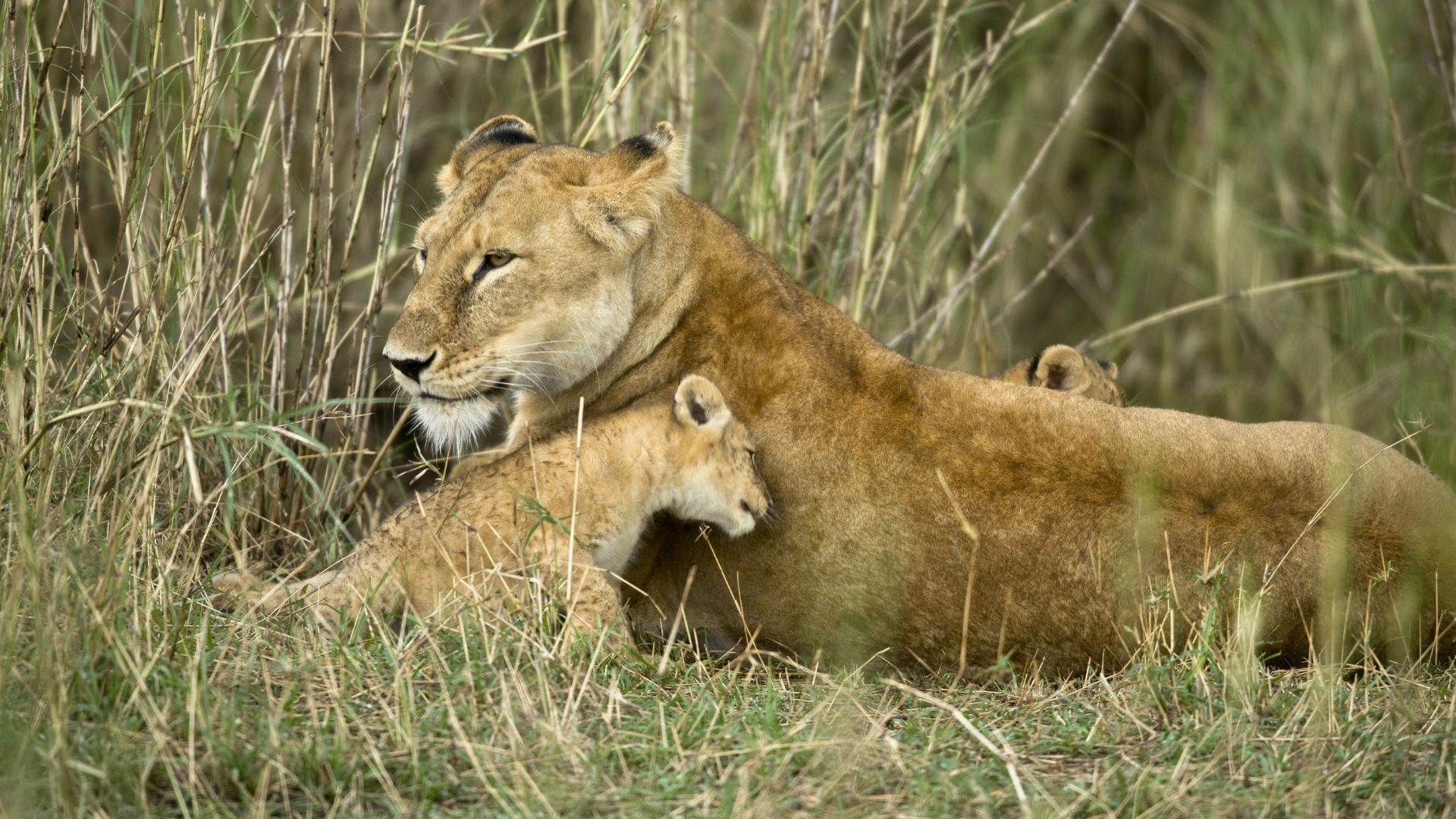
National Park Regulations
Climbing Permits & Fees
All trekkers must obtain a permit from the Tanzania National Parks Authority (TANAPA) to climb Mount Kilimanjaro. Tour operators usually arrange these mandatory permits for both entry and climbing. The permits specify the routes and climbing durations, with fees varying depending on the chosen route, season, and number of days. To comply with park regulations, book through an authorized operator.
Respect Wildlife
Visitors must respect the wildlife habitat in Kilimanjaro National Park and its surrounding areas. They must not feed, disturb, or attempt to capture animals. Visitors should observe wildlife from a safe distance to avoid stressing or endangering the animals, particularly predators and large mammals. By maintaining a respectful approach, visitors ensure both their safety and the preservation of Kilimanjaro’s diverse ecosystem. A safari in Africa provides the perfect opportunity to experience these animals in their natural habitat.
Campfire Restrictions
Kilimanjaro National Park strictly prohibits open fires to protect its fragile ecosystem. Trekkers must use environmentally-friendly camping stoves for cooking and heating. They cannot collect or use firewood from the park, as it contributes to deforestation and environmental degradation. By following these regulations, trekkers help preserve the park’s natural beauty for future generations, just as those enjoying a safari in Africa should also practice eco-friendly habits.
Waste Management
Climbers must maintain cleanliness in Kilimanjaro National Park to preserve its environment. They must carry out all waste, including food wrappers, plastic bottles, and human waste. Climbers should use designated toilets and leave no waste behind. In remote areas, trekkers must use portable toilets provided by tour operators to minimize environmental impact. Following these practices ensures the park remains pristine and sustainable for future visitors enjoying a safari in Africa.
Group Size Limitations
Each trekking route on Kilimanjaro has a maximum group size of 15–20 people, including guides, porters, and trekkers. This limit helps reduce environmental impact and ensures safety during the climb. Tour operators generally do not permit groups that exceed this limit, promoting a more sustainable and manageable experience for everyone involved.
Park Hours
Kilimanjaro National Park remains open year-round, but trekkers typically visit during the dry seasons (June–October and January–March) for better weather conditions. Visitors should respect the park’s operating hours, with trekking activities generally starting early in the morning and finishing by late afternoon. This schedule ensures safety and helps preserve the park’s natural beauty, making it a perfect add-on to your safari in Africa.
Guides & Porters
All trekkers and safaris in Kilimanjaro National Park must have a licensed guide. Trekking without a licensed guide is prohibited. Trekkers must treat their guides and porters fairly and respectfully, in accordance with Tanzania’s ethical guidelines for porters. These guidelines protect the porters’ welfare and support a responsible, sustainable trekking experience.
Respect Local Communities
Kilimanjaro National Park is near local communities, especially the Chagga people, who live at the mountain’s base. Visitors must respect local customs and traditions and avoid encroaching on private property. Engaging in cultural activities with the local community is encouraged, as long as it is respectful and mindful of local norms. Positive interactions with local communities help support sustainable tourism and cultural exchange, adding another layer to your safari in Africa experience.
Prohibited Items
Kilimanjaro National Park has a strict list of prohibited items, including plastic bags, which are banned in Tanzania. Visitors must pack accordingly and avoid bringing prohibited materials into the park. Only reusable containers or eco-friendly products should be used to minimize environmental impact and help preserve the park’s pristine environment. By adhering to these guidelines, visitors support sustainable tourism and conservation efforts, which are crucial for maintaining the beauty of a safari in Africa.
Logistics
For those on a journey to one of the safaris in Kilimanjaro National Park, arranging 4×4 vehicles and accommodations in nearby parks like Serengeti, Ngorongoro Crater, and Lake Manyara is essential. Safari accommodations range from basic camps to luxury lodges, so advance booking is recommended. Comprehensive travel insurance is crucial, covering medical expenses, trip cancellations, lost luggage, and emergency evacuation.
For a Kilimanjaro trek, ensure your policy includes altitude sickness and evacuation coverage. Time management is key, with treks lasting 5 to 9 days and safaris typically 3 to 7 days. Adequate rest days for acclimatization are vital to prevent altitude sickness. Finally, visitors must comply with park regulations, including paying conservation fees and adhering to eco-friendly practices to protect the environment and support local communities. Coordination with your operator ensures all legal and environmental requirements are met during your safari in Africa.
Communication and Network
Network availability in Kilimanjaro National Park is limited due to its remote, high-altitude terrain. While communication infrastructure in Tanzania is improving, mobile reception and internet connectivity remain sporadic within the park.
Tipping Culture
During safari tours, tipping safari guides and drivers is important. Safari guides, who provide educational and enriching experiences, are typically tipped $15–$25 per day, while drivers assisting with navigation and logistics receive $10–$20 per day.
Parting Thoughts
Kilimanjaro National Park offers an unforgettable adventure, combining stunning natural beauty, diverse ecosystems, and cultural richness. From its diverse landscapes—ranging from lush rainforests to alpine deserts—to its impressive wildlife and challenging trekking routes, the park provides an experience unlike any other. Whether you’re aiming for the summit of Mount Kilimanjaro or exploring the surrounding safari destinations, visitors are sure to be captivated by the park’s offerings. A safari in Africa here promises an experience of a lifetime.
Blog credits – Nabamita Choudhury
Follow us on Social Media – LinkedIn | TripAdvisor | Instagram

